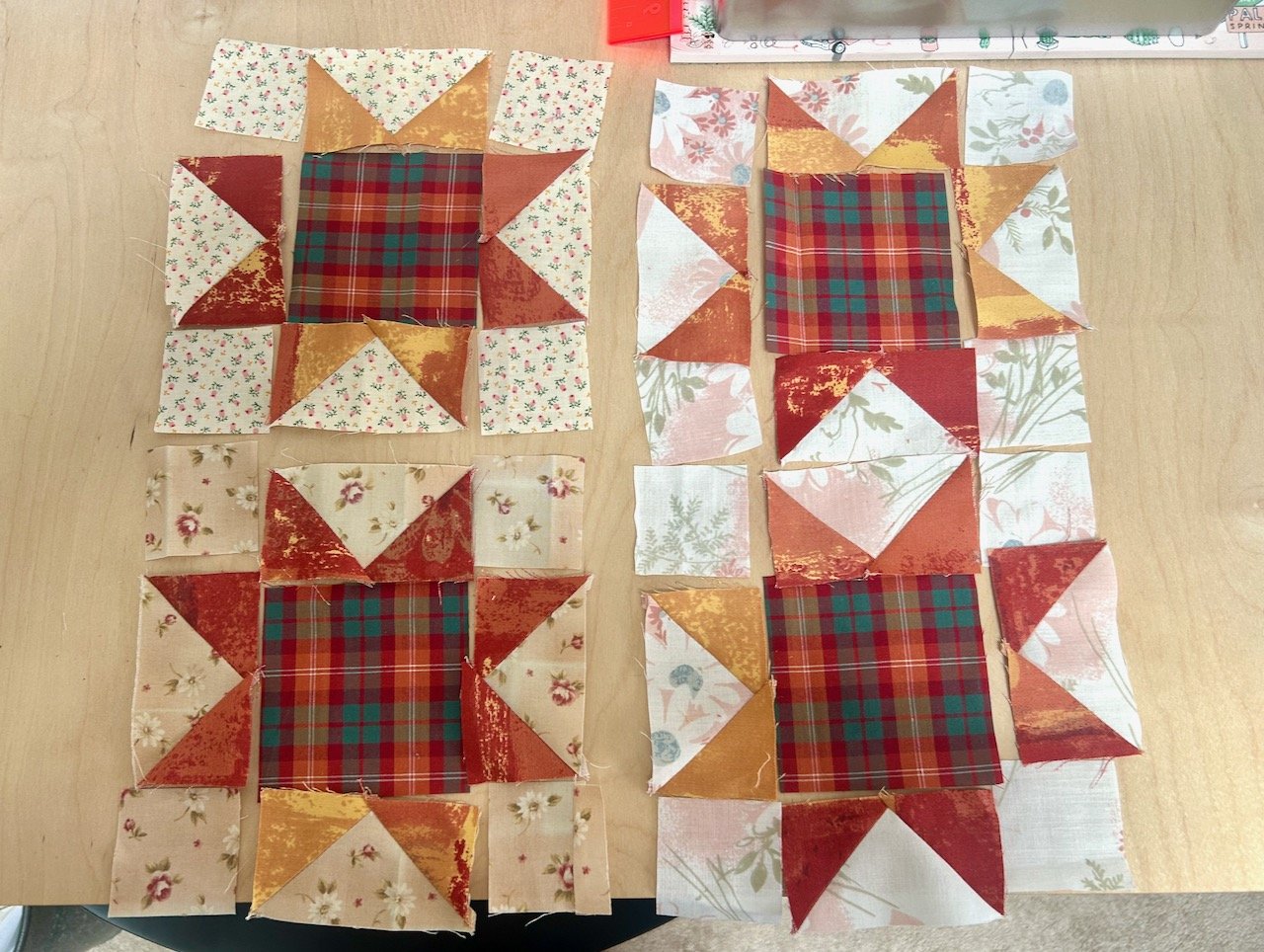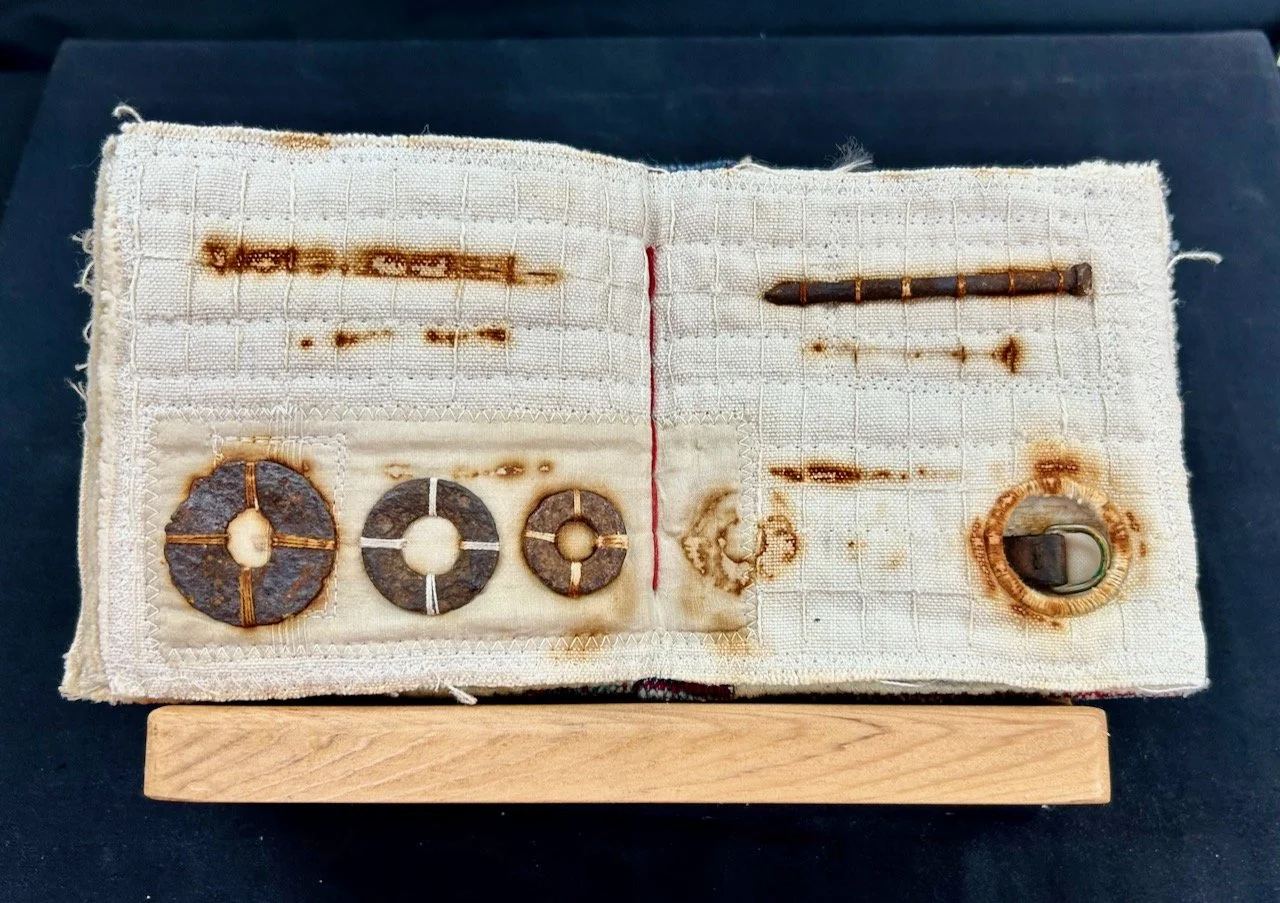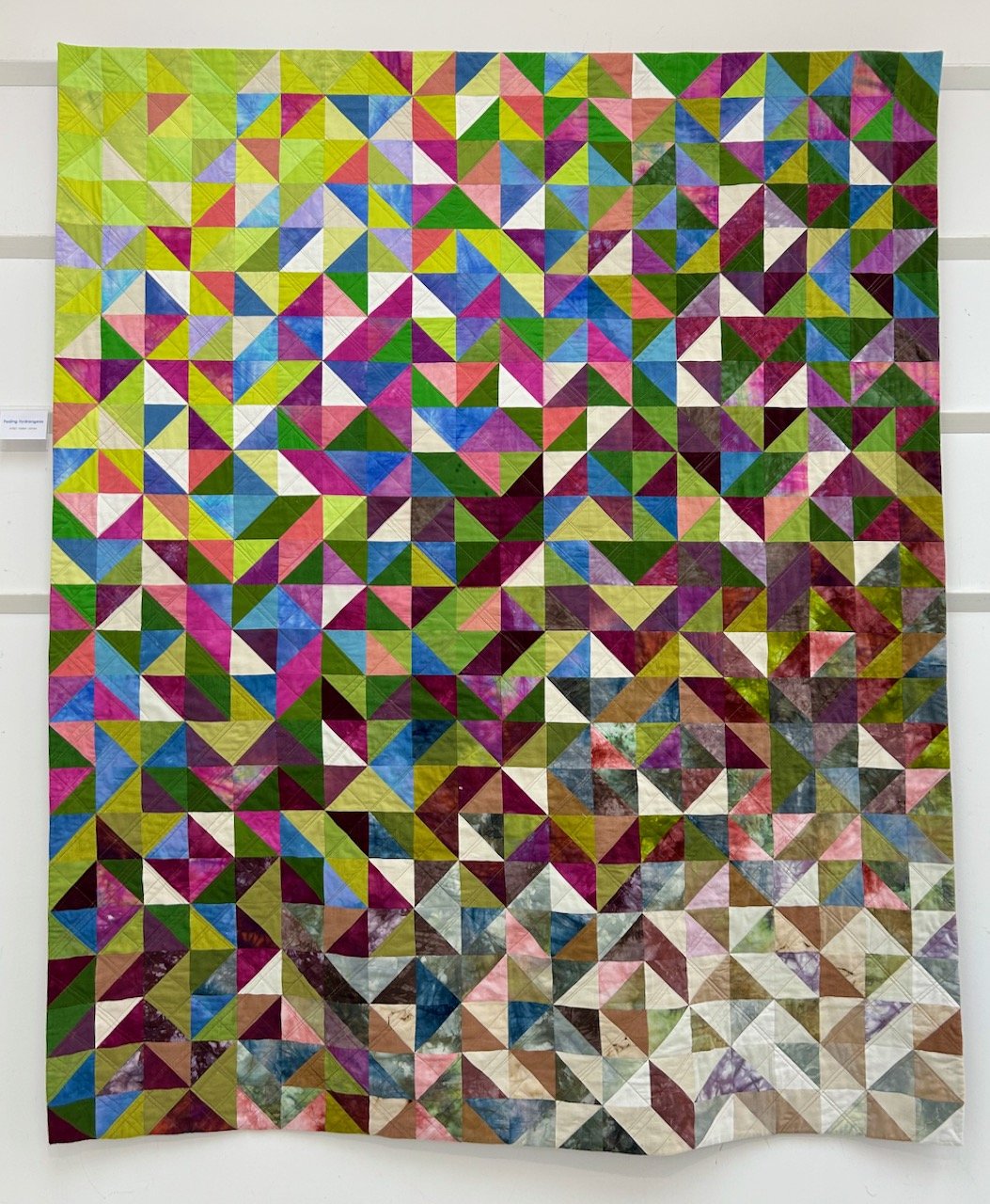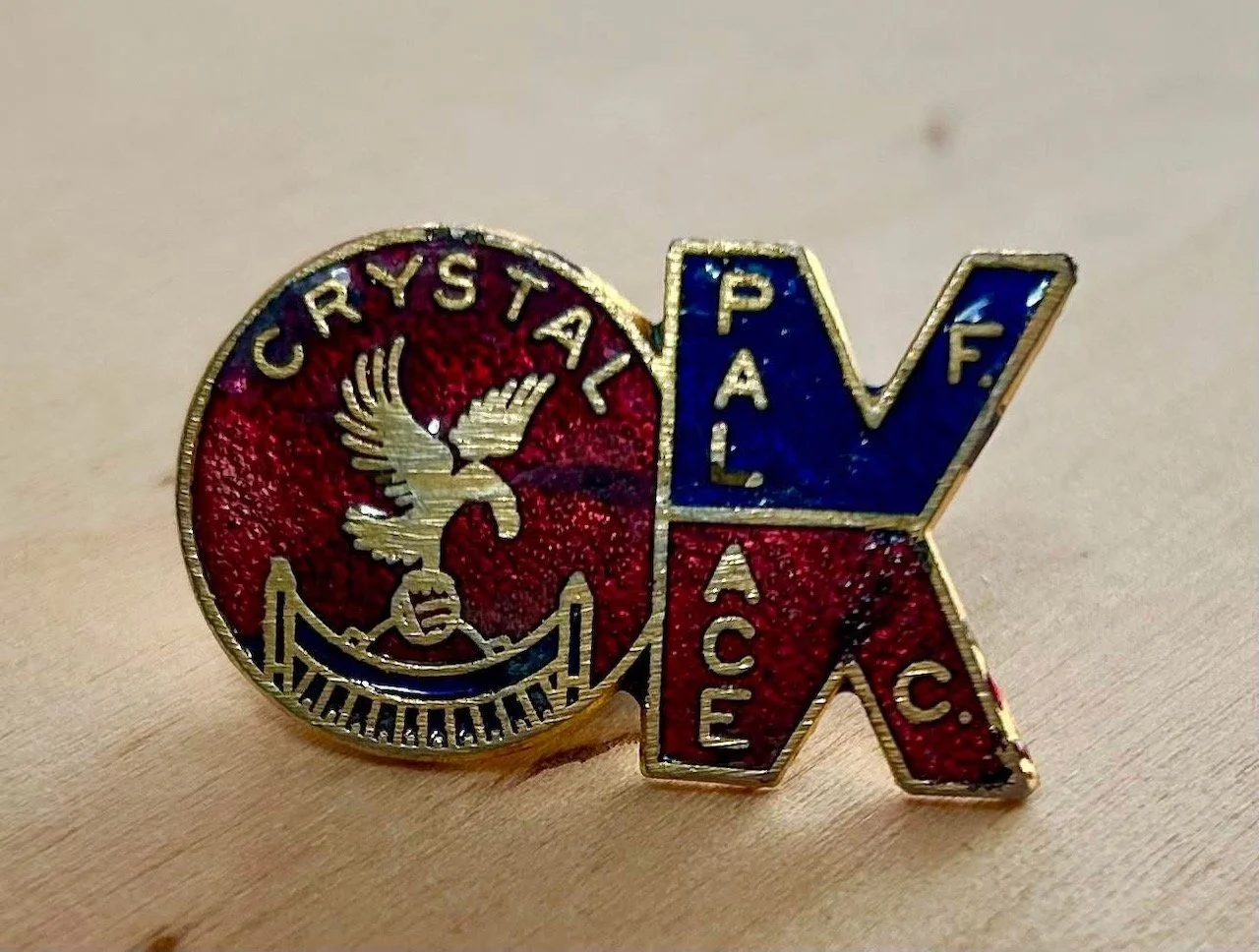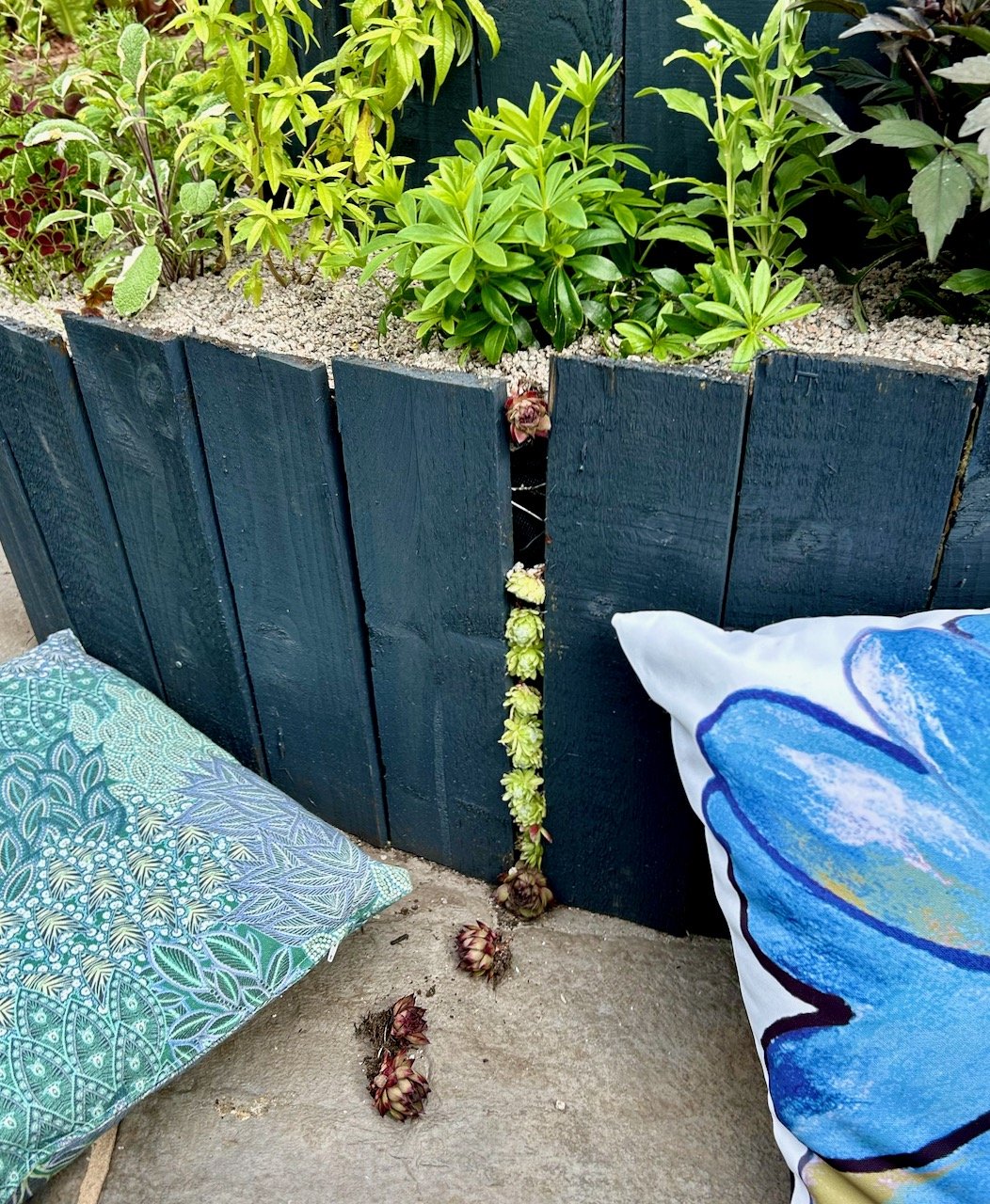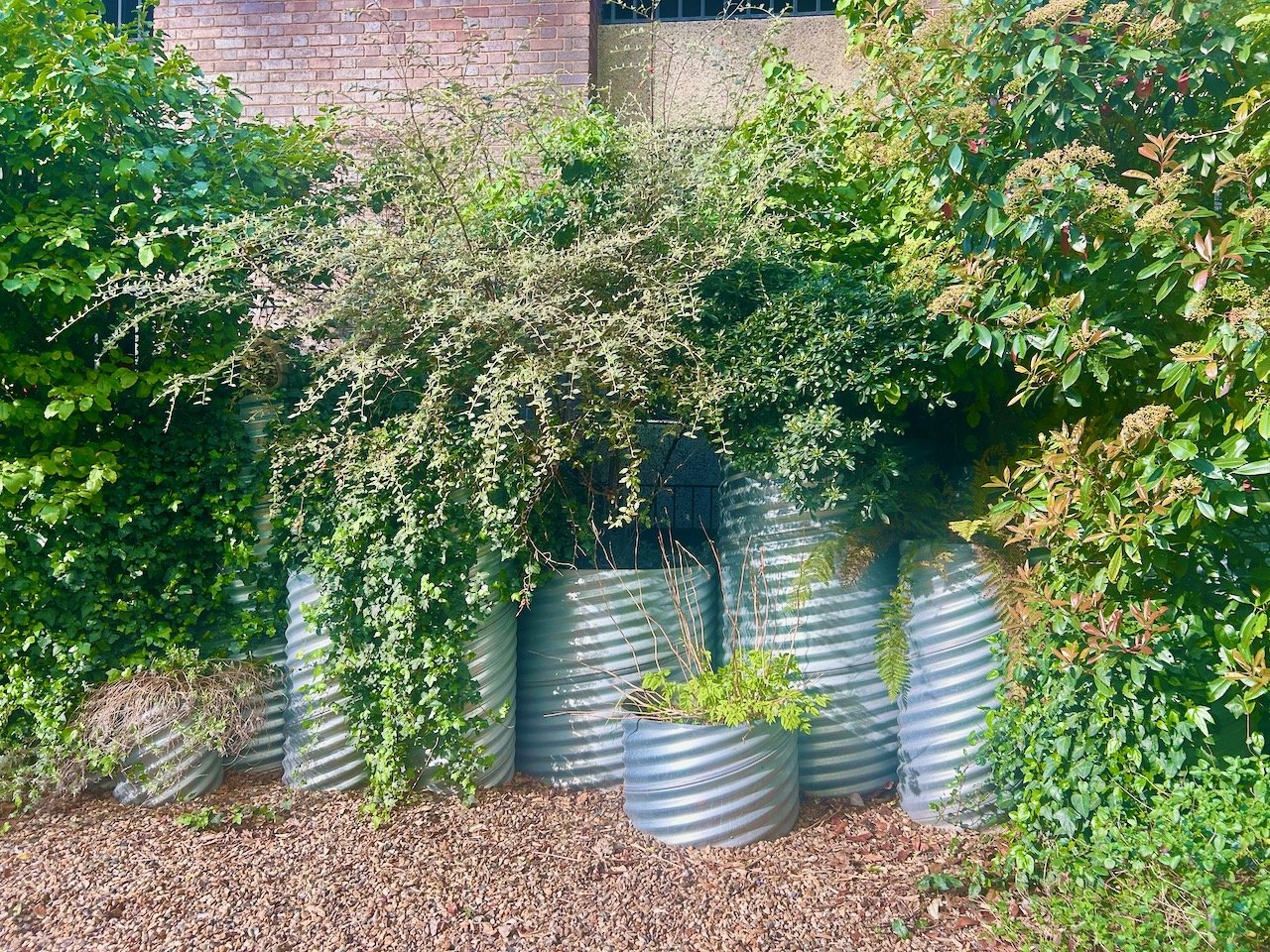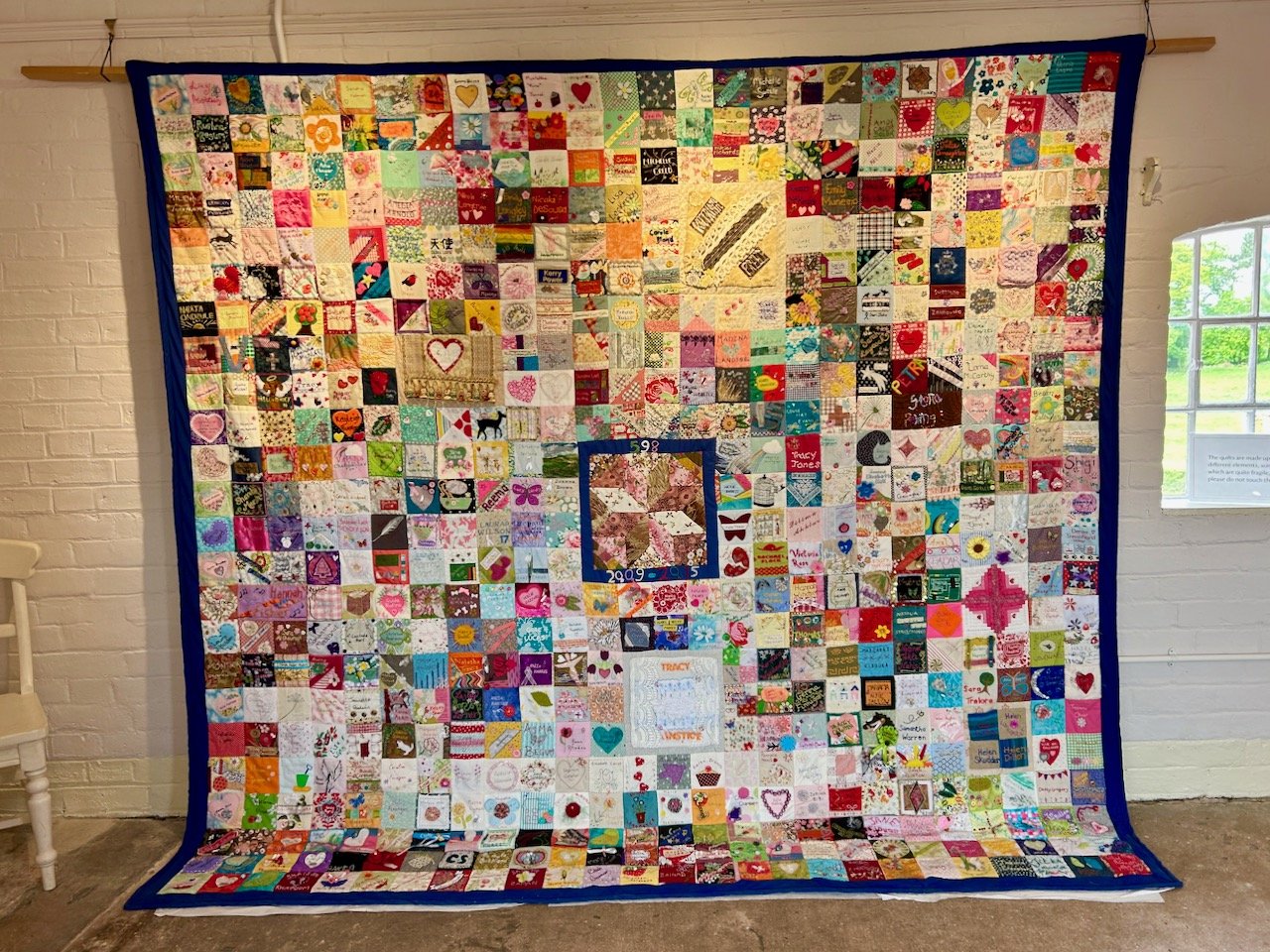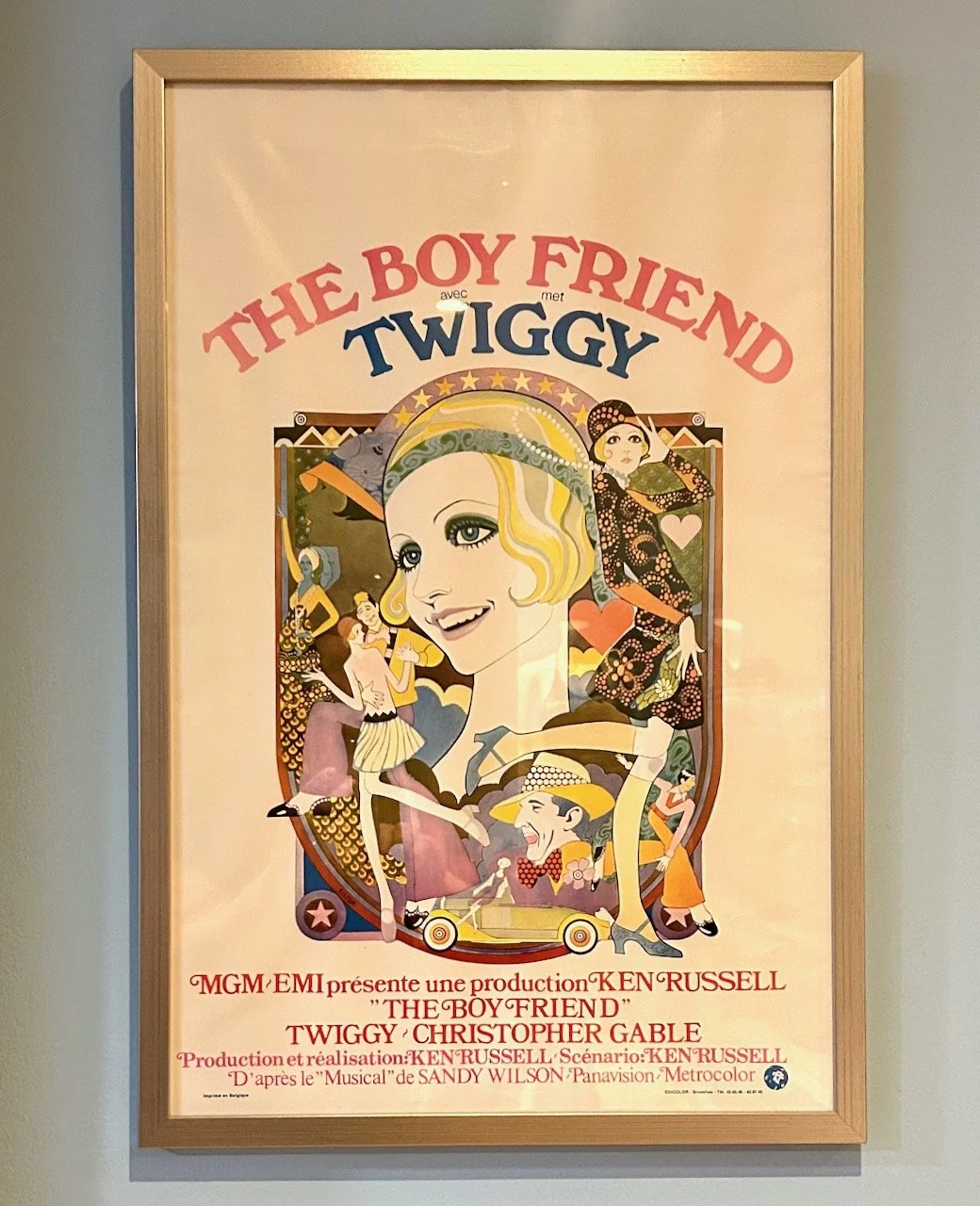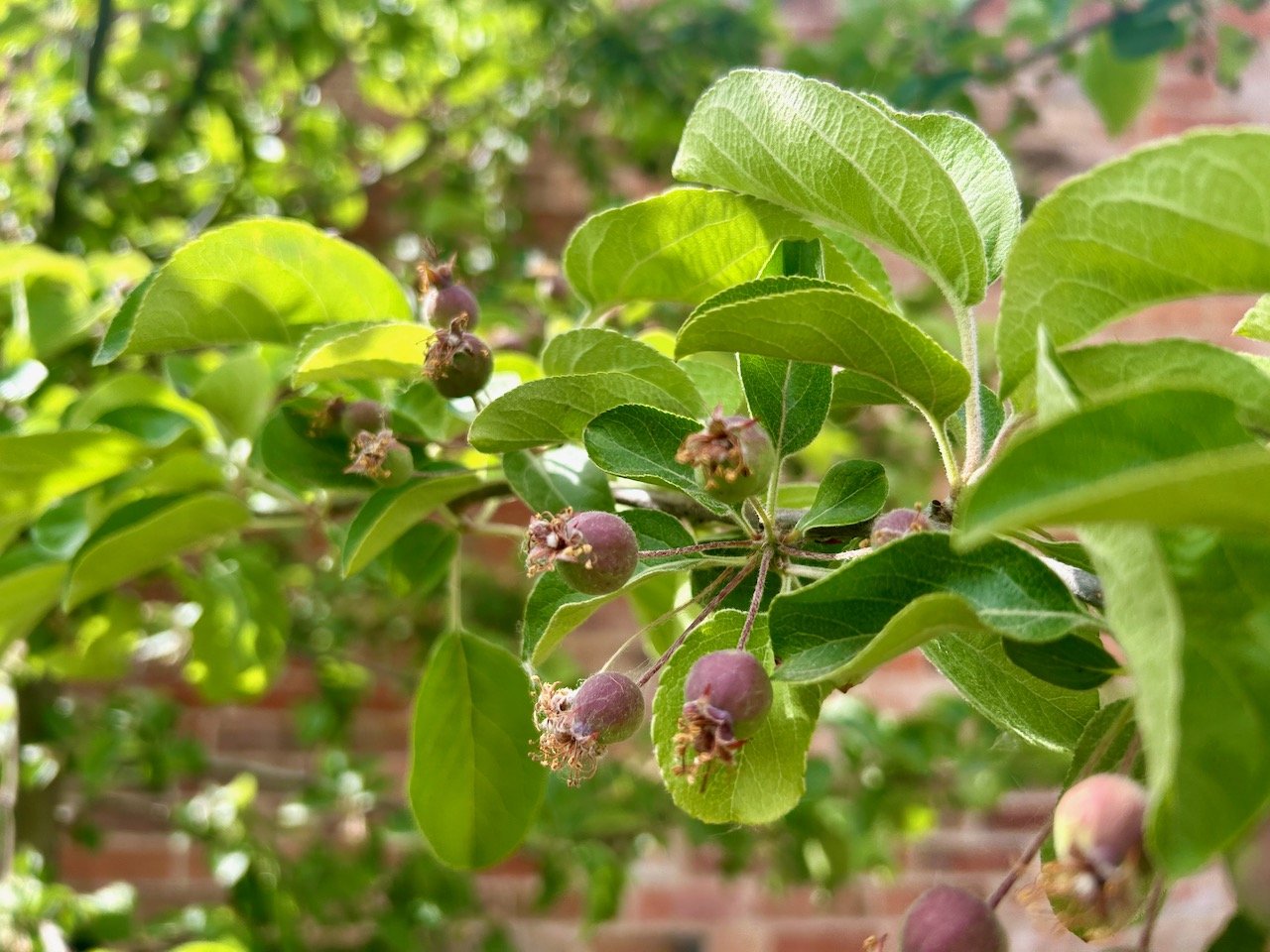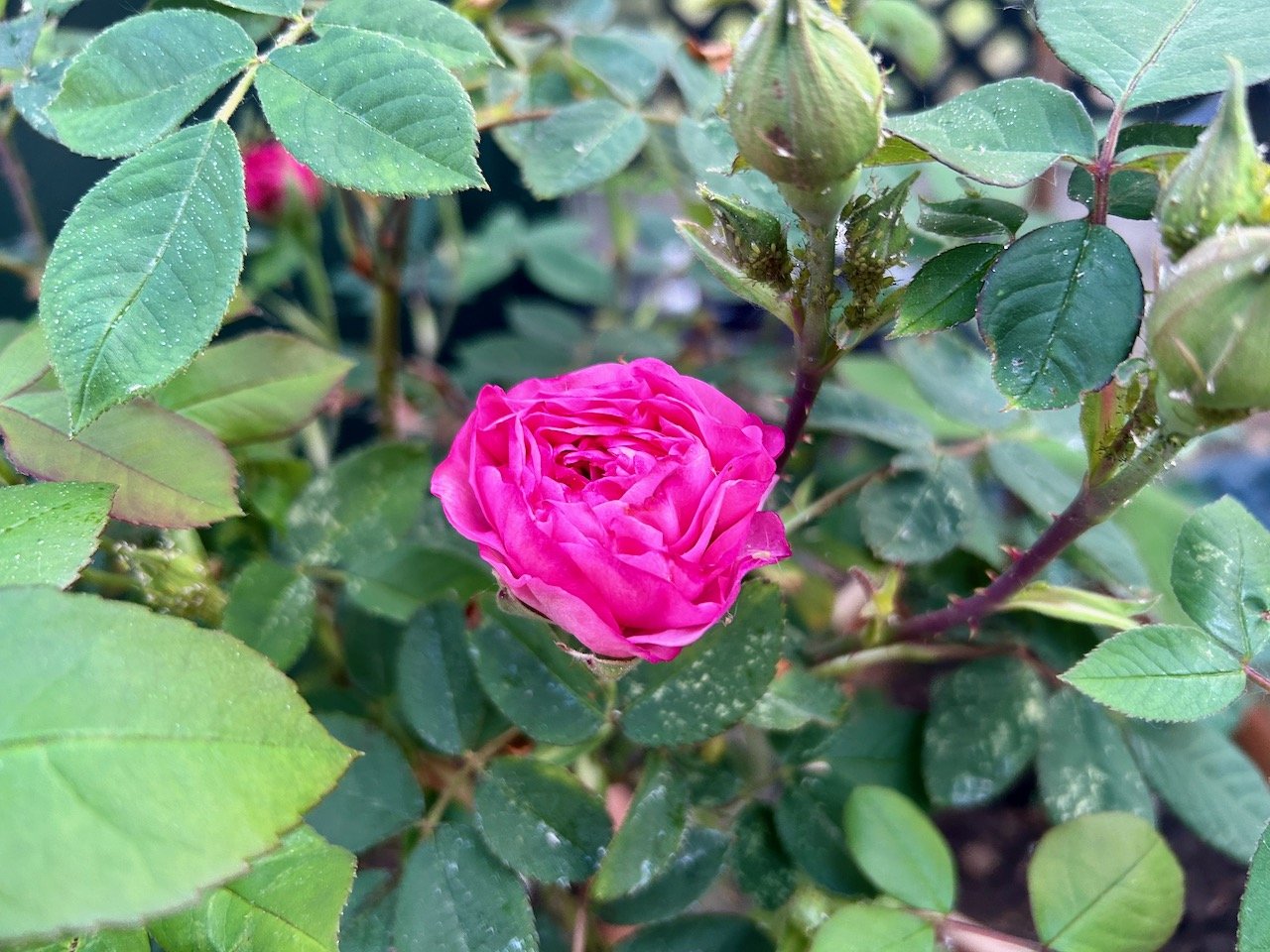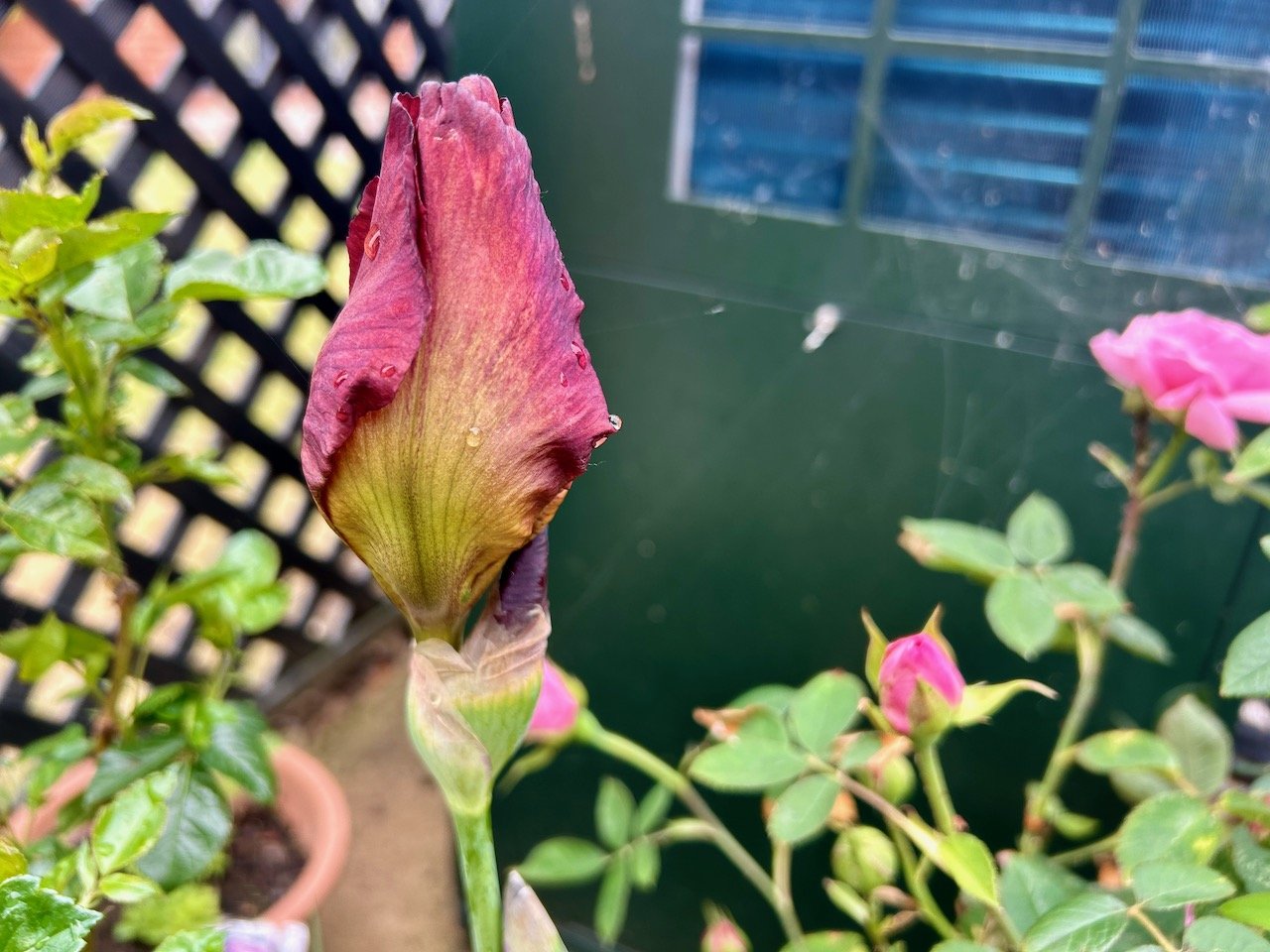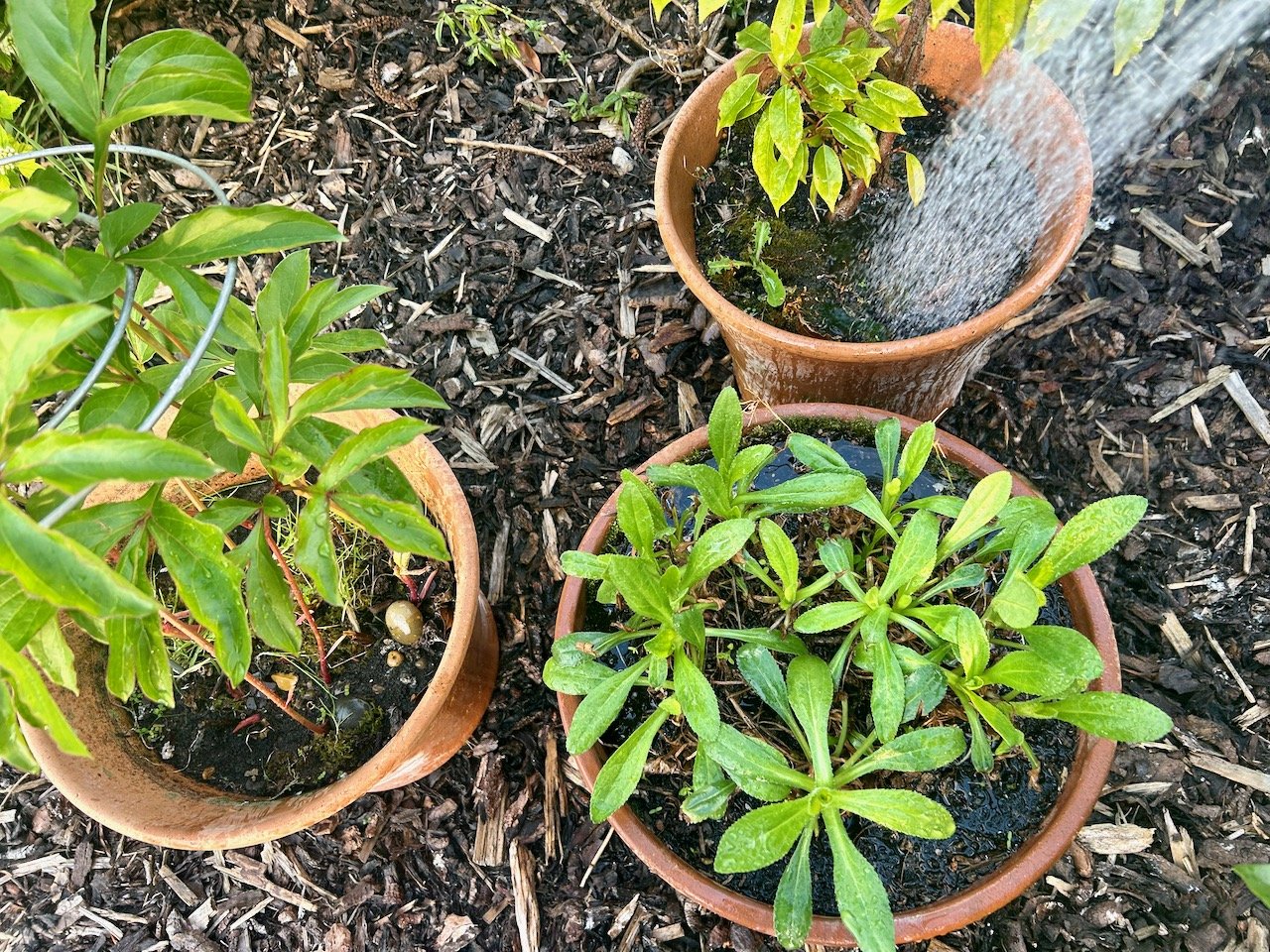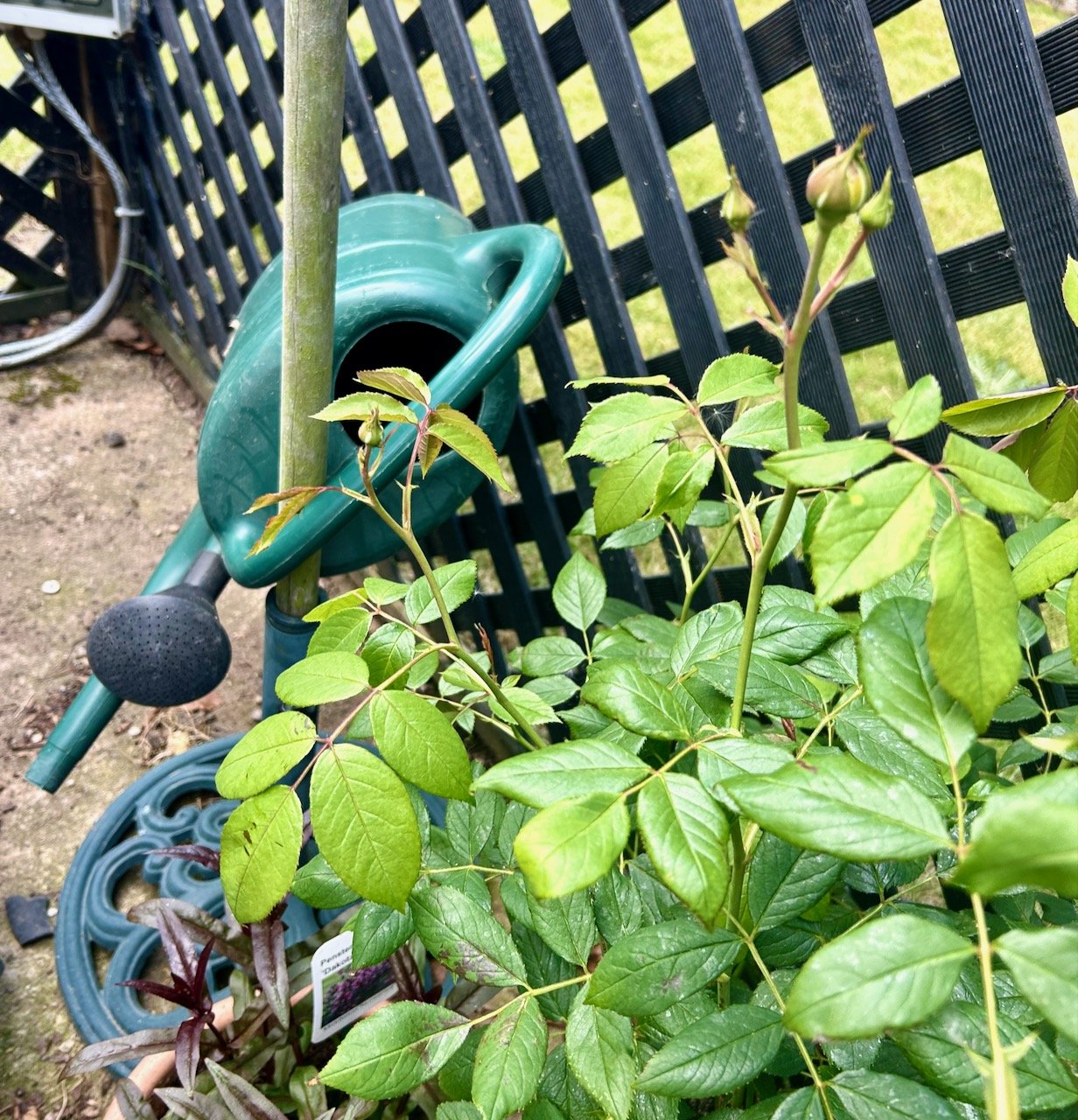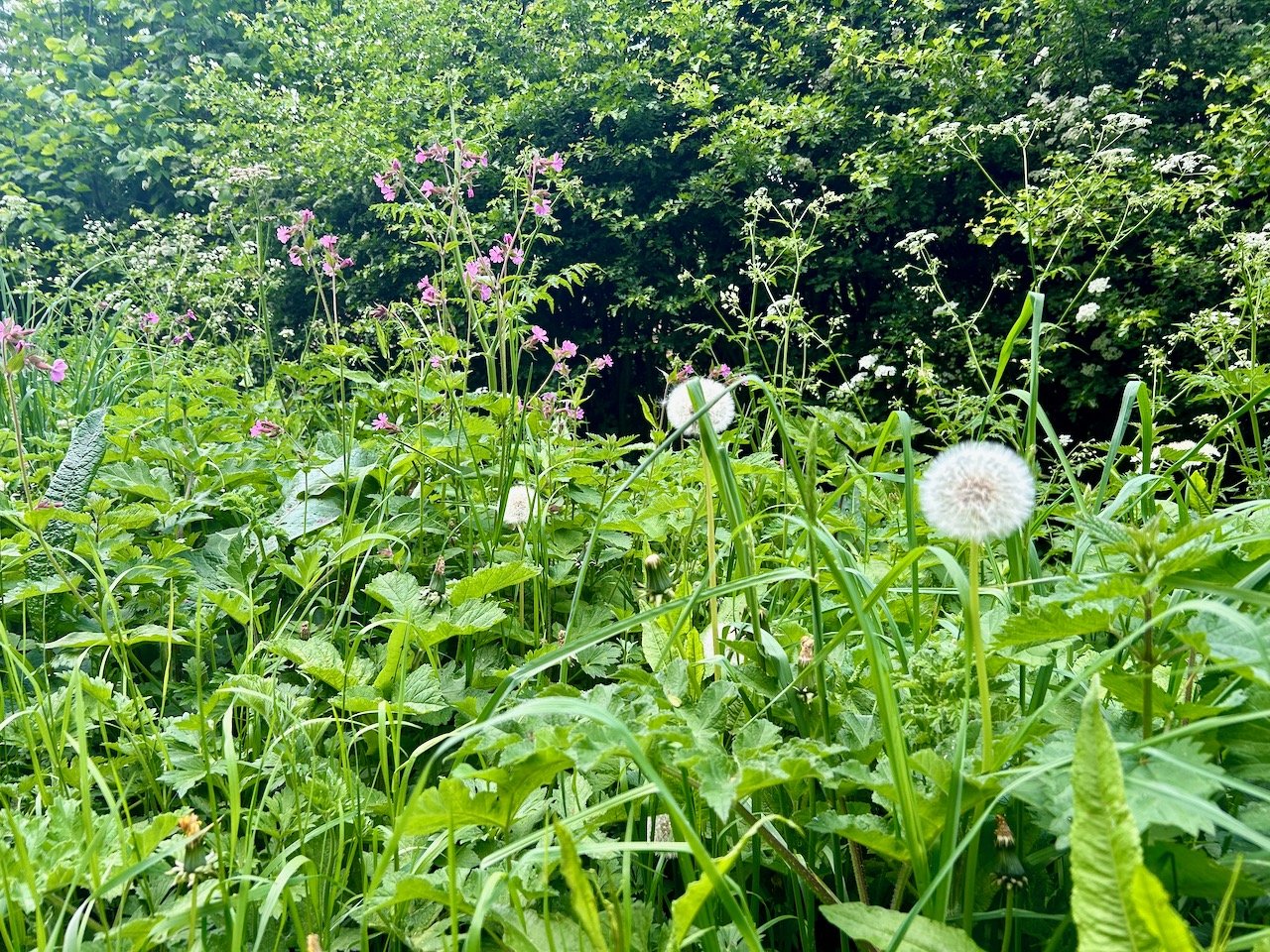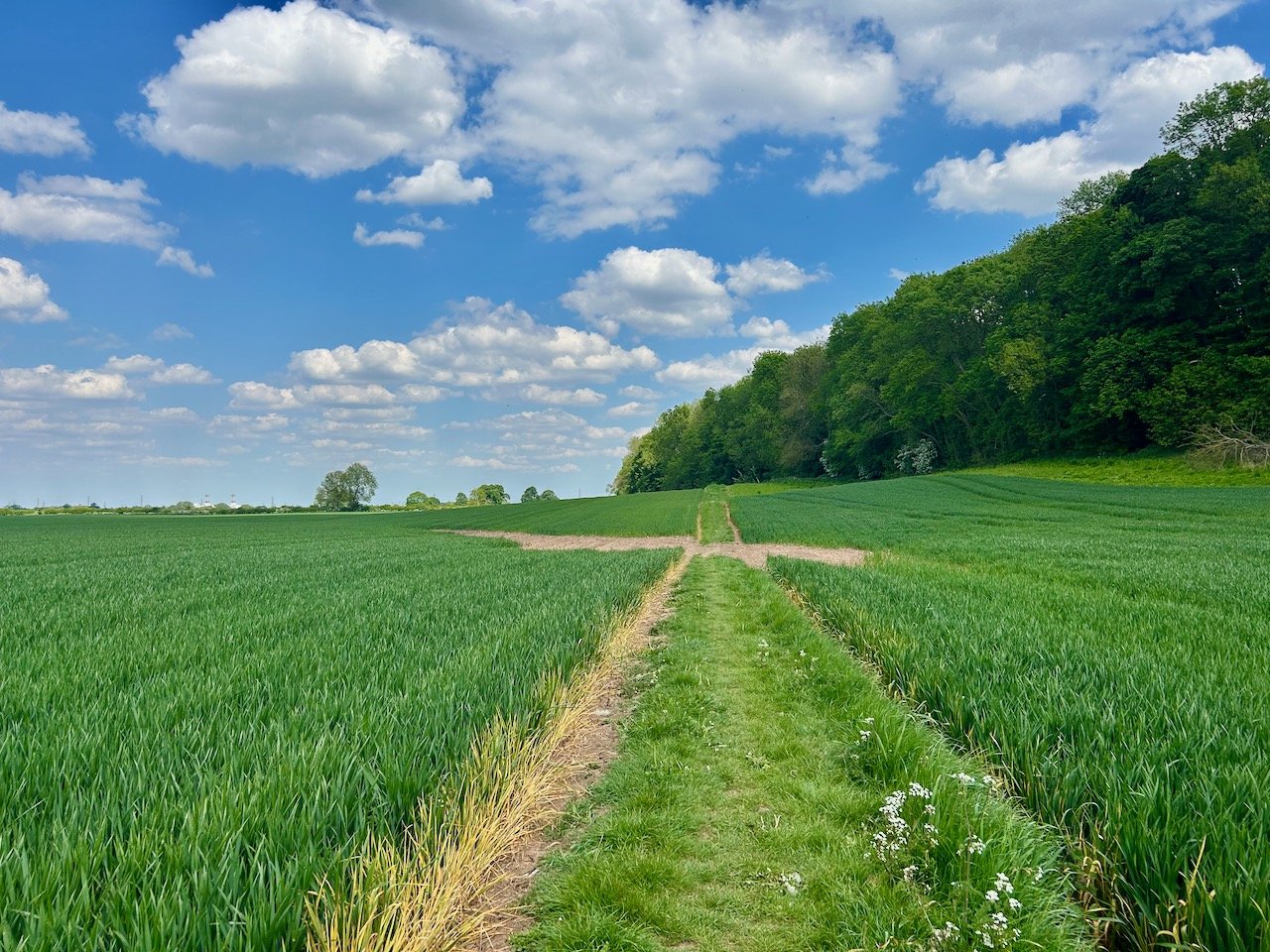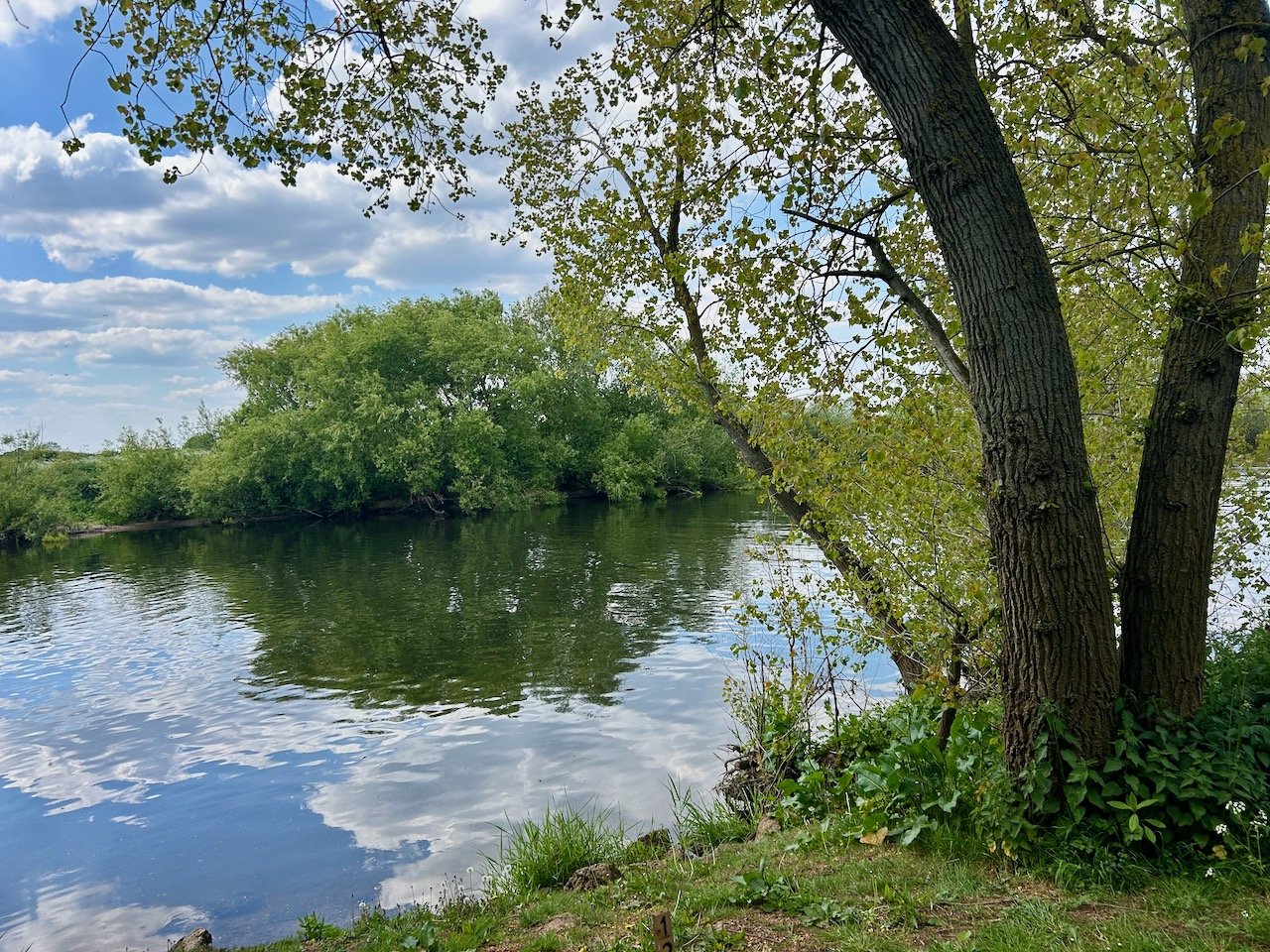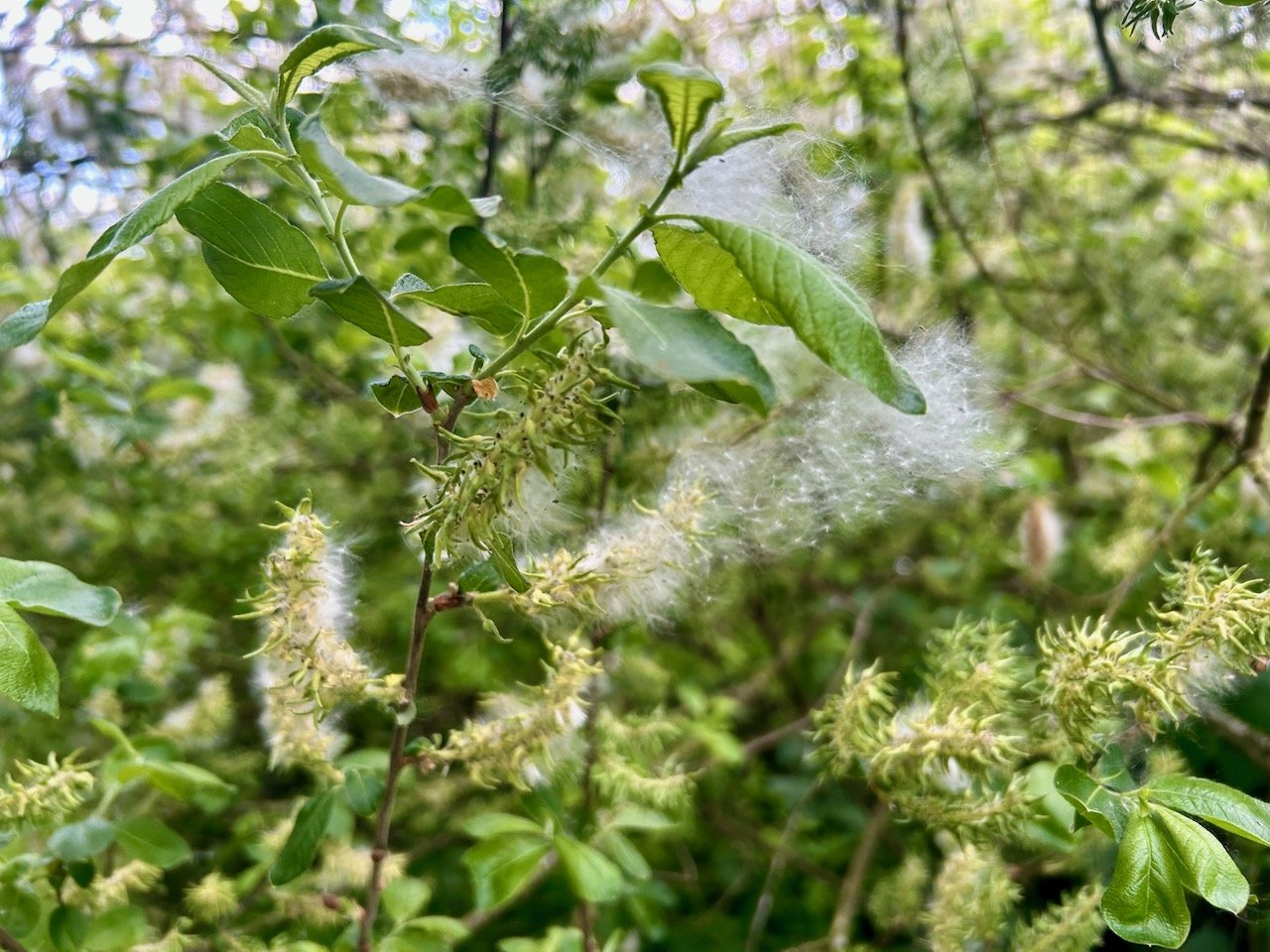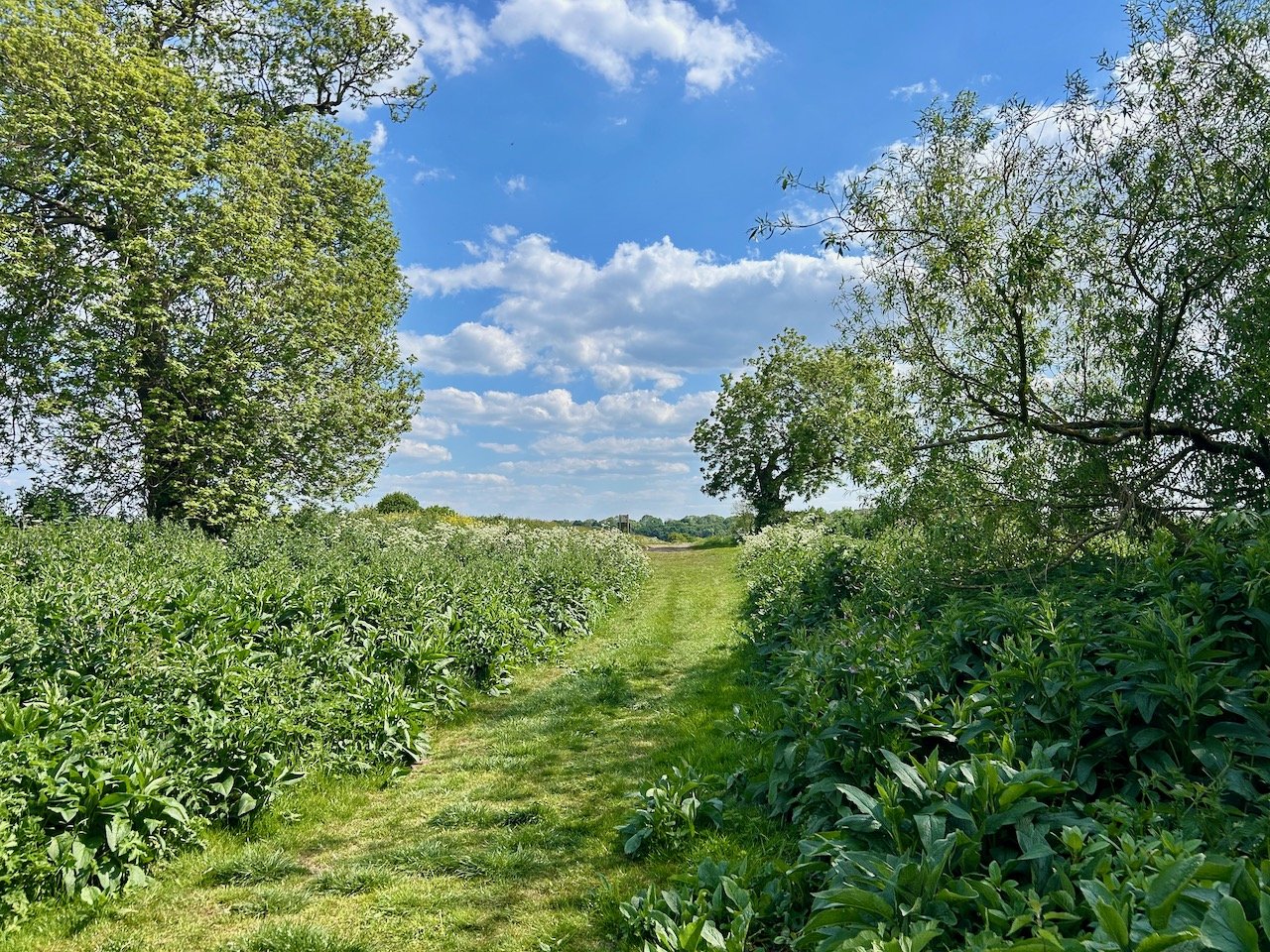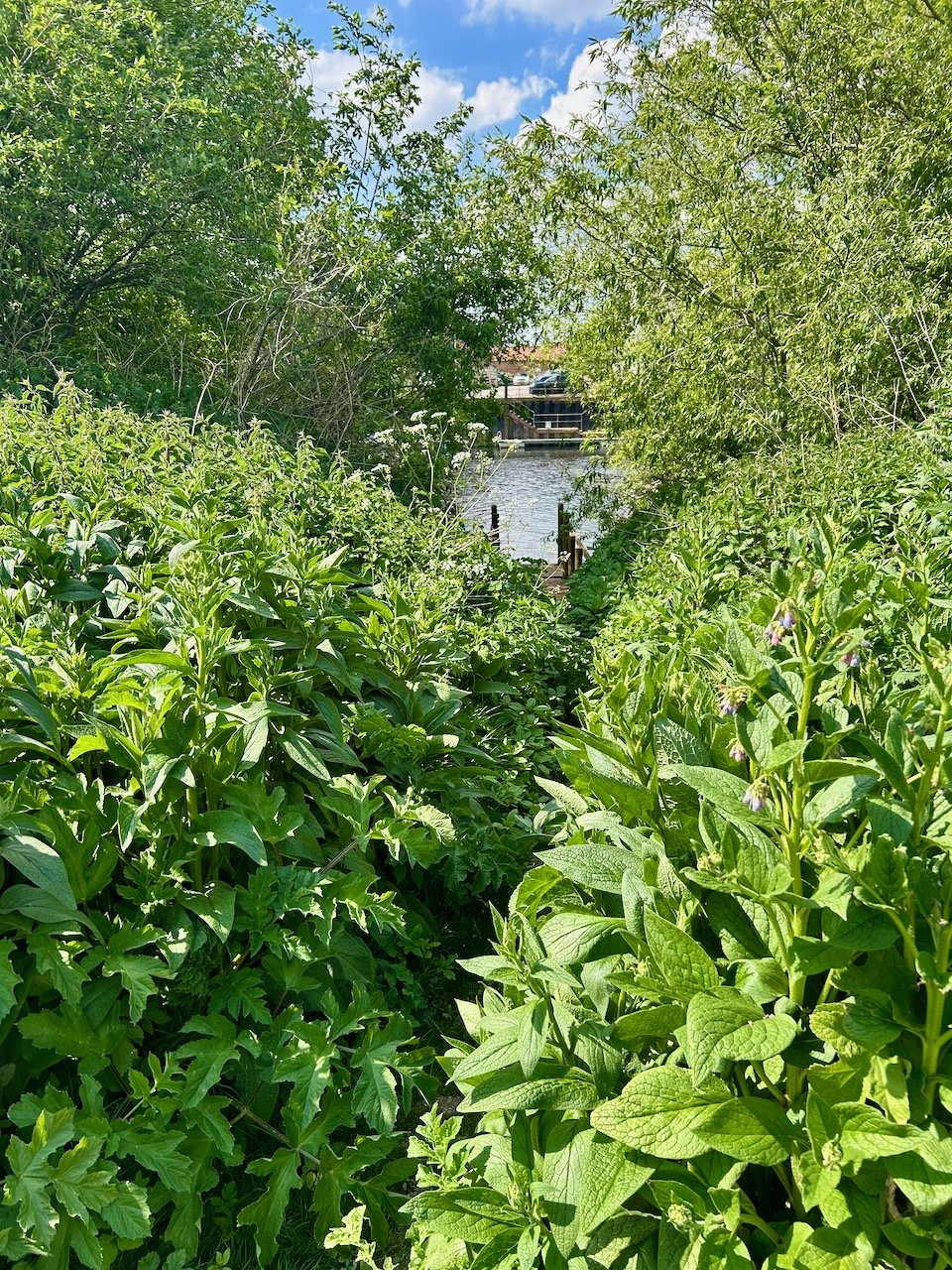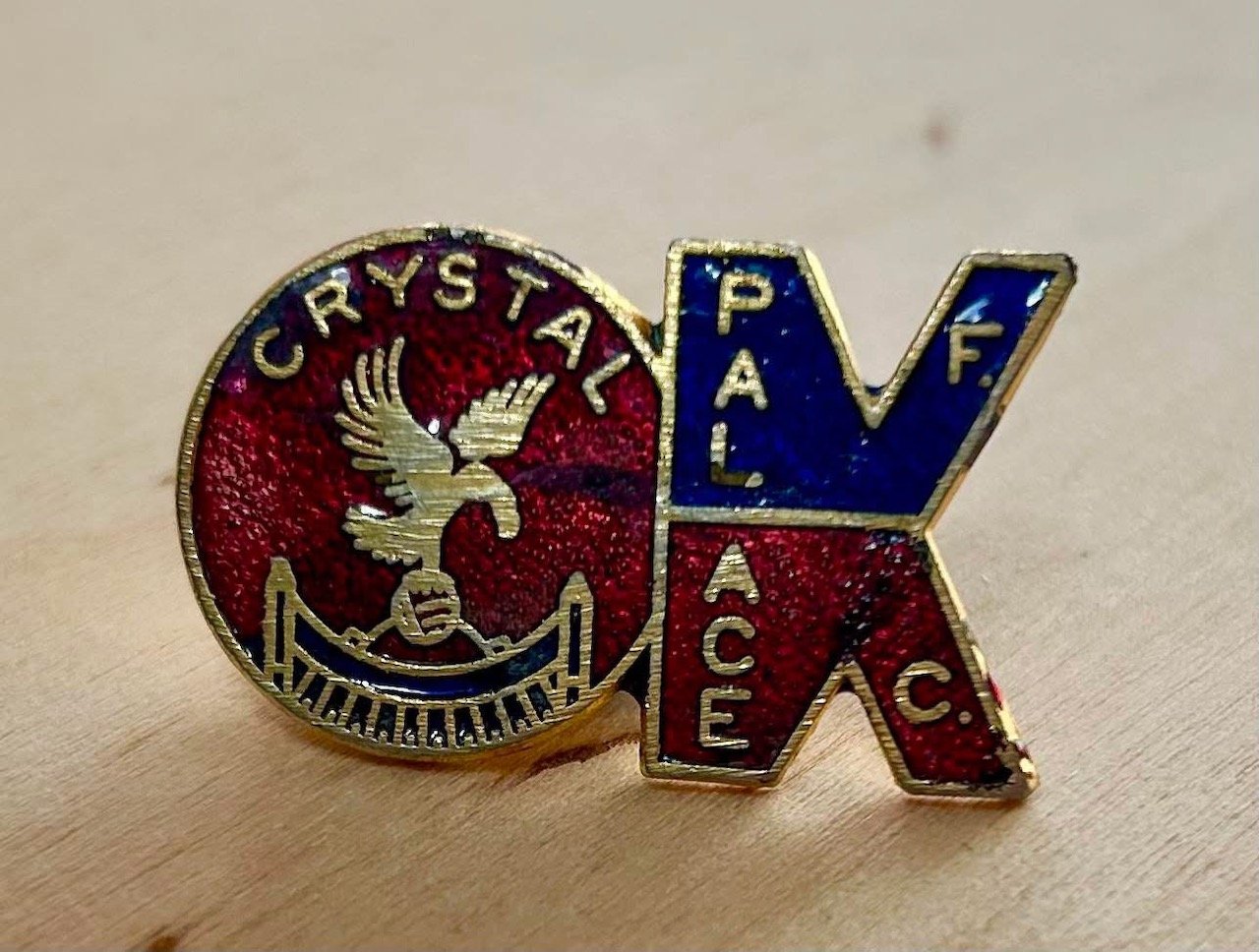It’s been a glorious month in our garden, though the good weather at the start of the month took a bit of a toll on my roses, and a couple of other plants which weren’t keen on the hot spells and not much water. The roses went a bit crispy, which isn’t a good thing. Oops.
That they were in pots was a good thing as I was able to move them to a more sheltered part of the garden so they were able to recover, and they have - phew. But before we get to those, last month was all about the blossom on my crab apple tree, and well after blossom comes tiny crab apples.
It looks like it might be a bumper year for crab apples, not quite so for the peaches though - I’ve only spotted three fruits forming, but given that it had peach leaf curl, I suppose three is better than none. I’m hoping that all three manage to last the course to fruition - fingers crossed.
Both tomatoes which I bought at the Newark Garden Show last month are doing well - I’m taking no chances though and all the plants I bought at the show, and the roses and astrantia which are in ‘special measures’ are temporarily in the shelter of the trellis from the heat pump. It seems to be helping those that were suffering and these tomatoes clearly are ok with it too as they’re about to flower.
The Mottisfont rose seemed the most affected and dropped the majority of its leaves, but with a more regular watering schedule and some shelter you can see just how well it’s recovered, with plenty of new growth all over the plant.
The Gertrude Jeckyll wasn’t affected quite so much and has since gone on to flower more profusely than it has before, and more than the other one we had in our London garden did. So I’m hopeful that with plenty of dead-heading and another feed when the time’s right, we’ll have plenty of roses this year. At the moment the downside is they’re in a place where we can’t see them, but for now I’ll take that.
They’ve had a bit of a year as after the crispy leaves shock, they also got whitefly and now seem to have attracted blackfly - my year of the roses, seems to be ongoing!
But when they deliver flowers like this, even after all their tribulations you really can’t argue, can you?
Surprisingly the newest rose, which I hadn’t even potted on (I have now) was the least affected by the weather, whether that’s because of its position in the garden, I’m not sure. But I’m glad to see it thriving.
Elsewhere in the garden the peonies are getting to burst their tightly bound buds. One seems to be aiming for Olympic heights, but if it’s happy then I’m happy. My hardy fuchsias have behaved differently this year too, I have four or five bushes, and all bar one of them have grown new shoots from the base of the plants rather than sprouting new growth on the older stems. I left them for as long as I could, and until the frosts should have passed, but in the end I cut the twiggy stems back - and there were a lot, my compost bin is full of fuchsia sticks. I’ve left enough though for them to provide some structure and support to the newer and more tender growth. So far they seem to be doing ok, but are clearly smaller than they have been before.
I’ve been a bit obsessed with my ‘Chelsea Jackets’ wallflowers and seemingly take a picture every time I walk past them if the number of photos of them on my phone are anything to go by.
I’ve had some unexpected discoveries this month too, with a couple of plants throwing up some flowers when I didn’t expect them to. The first was the iris which we bought at the Newark Garden Show. I didn’t expect much from this this year, especially as it’s still in the pot it came in, but it started to show signs of a flower and it’s become as obsessive as watching the wallflowers.
This is how it started:
Above is the most recent picture I have, it’s already awesome and I know it’s going to be gorgeous once it’s out fully.
The other surprise flowering is taking place in our outside border, on a plant I thought was a kind of grass but now realise is probably a kind of yucca. I spotted it as I drove in one day, and went for a closer look.
As you can see the flowers aren’t quite there yet, and I can’t wait to see how they look in full bloom. These also look as if they’re going to be pretty spectacular, and with the lavender in front of them, and throughout the garden, almost ready to flower it’s going to be a riot of colour and scent, and bees hopefully!
I’ve potted on and tidied up the burgundy heucheras, which also looked a bit crispy around the edges. They’ve repaid this attention with some flowers, which will be the palest of pinks when they open. My daisies have also recovered from a fair bit of neglect too, which is also good news as I really thought they were a gonner.
While I don’t like to lose any plants, these were ones we bought when our previous house was on the market to dare I say tart up the garden a bit, but they’ve hung around so I would be sorry to have lost these.
This month I struck on a genius way of stopping my watering can blowing about the garden when I leave it out - I don’t know why it’s taken so long, but I realised if I threaded it over the pole of the parasol (which lives outside without the parasol) it can’t blow anywhere - and it’s easy to get to to use.
I’m so pleased with myself!
The new sign that I bought at the Devon County Show is up on the trellis and looks fab, though I did need to de-cobweb the trellis beforehand. MOH has since de-cobwebbed all of the cladding and window sills/surrounds and door steps, and let’s just say it’s not a one time job as we know the webs and fluff will be back before too long. But the sign looks good.
We also took delivery of the large pot that we bought at Grand Designs on a whim. Thankfully it works just where, and how I thought it would. As soon as we had it off the pallet I was desperate to try it where I’d imagined it. Now I have to imagine it with a standard olive tree planted in it, well until we buy one anyway - I’ve a plan to tour our local garden centres looking for one later this month!
Once it was in place MOH could see how I thought it would work, and liked it which is good news. I’ve realised I’m quite a visual person so can more easily see things in my mind than MOH can - but he trusts me, and it worked out, so that’s a result. For my larger garden design ideas I do need to work out how to get them down on paper in a way that MOH can also visualise, I think that’s going to be a bit of a challenge, but I’m sure we’ll get there.
And with more crispy plants than I’d like this month, and the fact that I’m running out of pots to put new plants in, I think the plans for our gardens will need to progress more quickly this summer. I’m sure it’s going to be a bit of a rollercoaster ride, and a lot of work, but first we need to finalise what we want.
I’ll leave you with two more of the plants we brought with us which are in my new extended hospital bay, alongside the garage. My bay trees weren’t looking so well either, they’d been up against the front wall over the winter taking shelter, but with their leaves yellowing they were also crying out for some attention.
I’ve pulled them out of the borders so they can get some more sun, but not so they’re in full sun and given them a double diluted feed of tomato feed. I picked off all of the yellow leaves from the bush on the left, which was looking healthier than its counterpart, and then picked off the worst of the yellow leaves from the other bush.
They’re already looking much healthier than they were, and it seems that bay trees in pots can be susceptible to yellow leaves due to a lack of nutrition, so a feed should help them. I’m hoping I spotted these before it was too late as we’ve had these for absolutely ages. They did start out the same size, and kept growing at similar speeds for many years. Then they spent one particularly bad winter on opposite sides of our London garden, and came out of that with different growth rates - so I can no longer pair them together, but that’s ok as I’ve realised that’s not quite what I want in this garden anyway!
Let’s hope the good weather - but not so good it makes my plants crispy again - continues!

